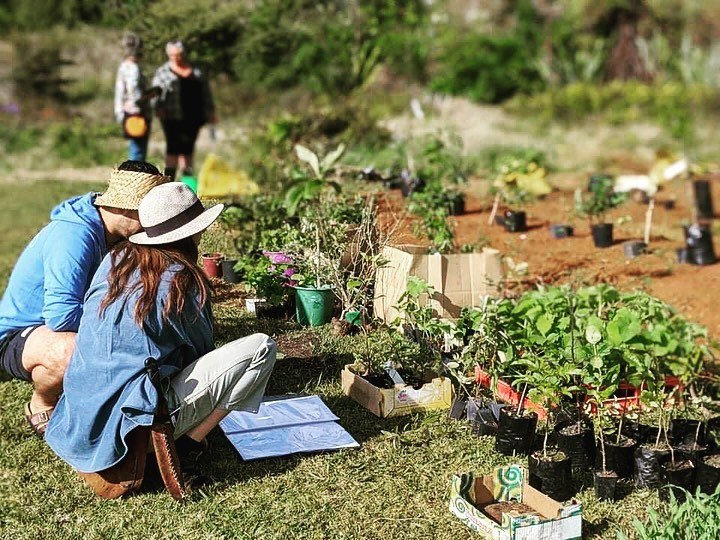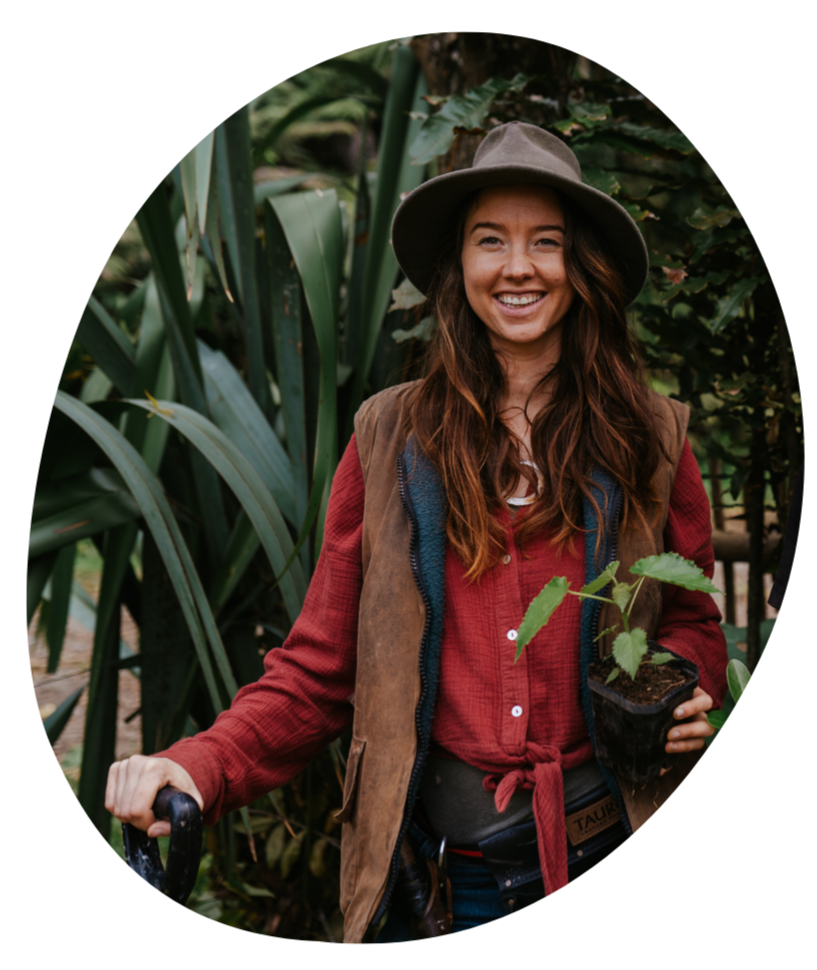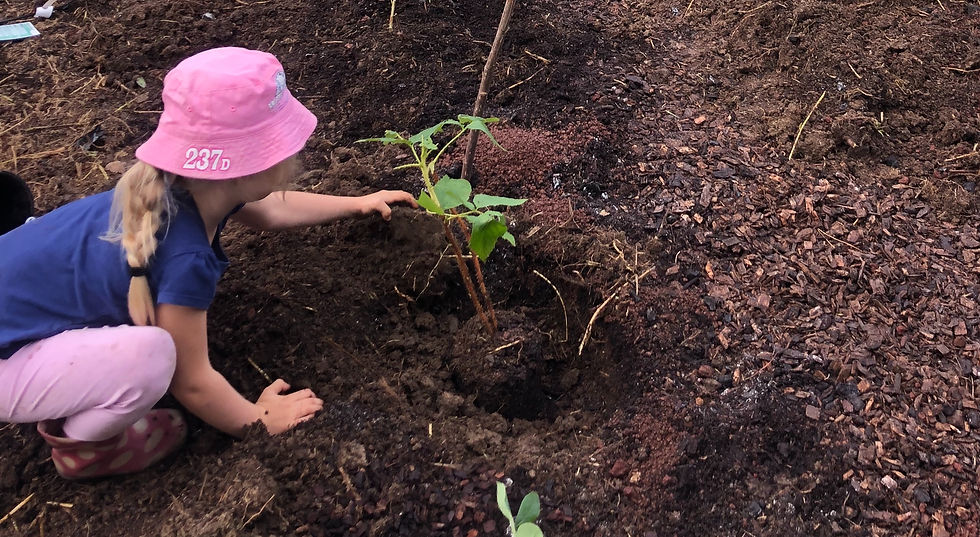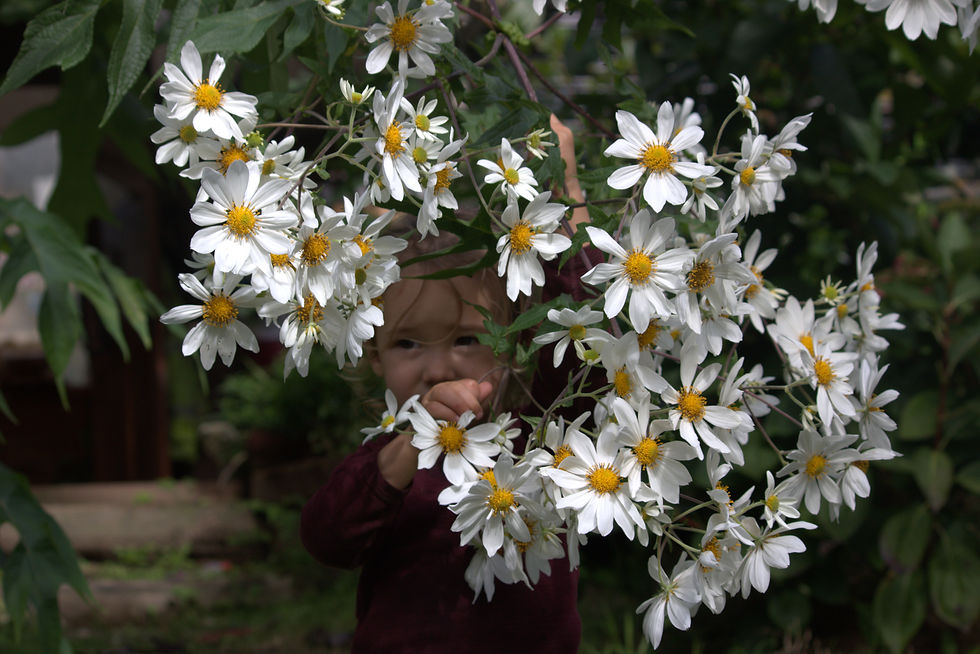An Introduction to Syntropic Agroforestry
- Frida Keegan

- Jun 30
- 3 min read
Updated: Jul 7
At Tree Born, our approach to design and education is deeply rooted in the living systems we’re a part of — and one of the most inspiring and transformative frameworks that continues to shape our work is Syntropic Agroforestry.

Syntropy, at its essence, is about life moving toward greater complexity and harmony. The word itself comes from ‘syn’ (together) and ‘tropy’ (movement) — the opposite of entropy, which describes the breakdown and simplification of systems. Unfortunately, that’s exactly what conventional agriculture tends to do: reduce thriving, diverse ecosystems into simplified monocultures that require constant inputs just to survive.
Syntropic Agroforestry offers a powerful and practical alternative. It’s a system of farming that mimics natural succession, turning degraded, weed-smothered landscapes into abundant, self-organizing, food-producing ecosystems — without external inputs. It integrates food, timber, animal systems, and habitat restoration in a way that not only feeds us but regenerates soil, biodiversity, and human connection to land.
This modern expression of an ancient idea was coined and developed by Ernst Götsch, a Swiss farmer living in Bahia, Brazil. Working with Mayan forest gardeners and observing everything from weeds to cyclones to insect patterns, Götsch developed a way to farm that listens deeply to nature. He transformed completely degraded land into a 250-hectare food forest producing some of the world’s finest cacao — a living example of syntropy in action.
A Personal Connection: From the Forest to the Family Farm
This philosophy is more than an influence — it’s the soil Tree Born has grown from.
My family has been living and breathing syntropy for decades. My father, Klaus Lotz, worked alongside Ernst Götsch in the 1980s, later applying syntropic principles across Bolivia in agroforestry development programs. In 2003, we immigrated to Aotearoa (New Zealand) and began the long-term process of regenerating a former sheep farm on hard clay soils in Northland. Translating syntropy from the tropics to our more temperate climate was a challenge — everything grows slower here, so feedback takes longer. But over years of careful observation, pruning, trial and error, and deep listening, my father (alongside my mother Vanessa) created a thriving agroforest on that steep, compacted land. That space now grows over 300 plant species — a lush mosaic of fruit trees, berries, nuts, root crops, natives, timber trees, and support species — all growing in harmony.
This is the heart of PermaDynamics, the family farm and collective that I’m proud to be a part of, alongside my brother Josh and our partners Mati and Sean. Together, we grow food, install edible landscapes, teach, consult, and continue learning directly from the land. The farm is a living example of what’s possible when we work with nature rather than against it.

Syntropy in Practice: Why It Matters to Tree Born
At Tree Born, we bring the same principles into every design and guidance package. Whether we’re planting a family food forest, a school garden, or a tiny edible backyard, we’re always thinking in succession, in diversity, and in deep collaboration with life.
Some key principles of syntropic agroforestry that guide our work include:
Respecting natural succession to accelerate fertility and reduce inputs
High-density, diverse planting (often 8+ species) to trigger quorum sensing and community resilience
Regular pruning to manage plant hormones and direct growth
Working without external inputs to allow for clear feedback from the system itself
Observation and adaptation as core design tools
Syntropy isn’t a recipe — it’s a relationship. It requires slowing down, watching, and responding. It challenges the mindset of control that dominates much of agriculture and instead invites us to co-create with natural forces, rather than dominate them.
From us to you
By sharing this framework with you through Tree Born, our hope is to empower more people — especially here in Aotearoa — to reclaim a sense of belonging and participation in the landscapes we inhabit. Whether you're planting a single tree or stewarding a whole forest system, these practices are accessible, beautiful, and urgently needed.
Through syntropy, we can create systems that feed us, heal land, invite biodiversity, and deepen our connection to the living world — all at once.
This is the soil Tree Born is planted in. If you'd like to explore it further in your own space, we'd be honoured to walk alongside you.

Frida Keegan Co-founder of Tree Born, PermaDynamics and Sapp




Comments